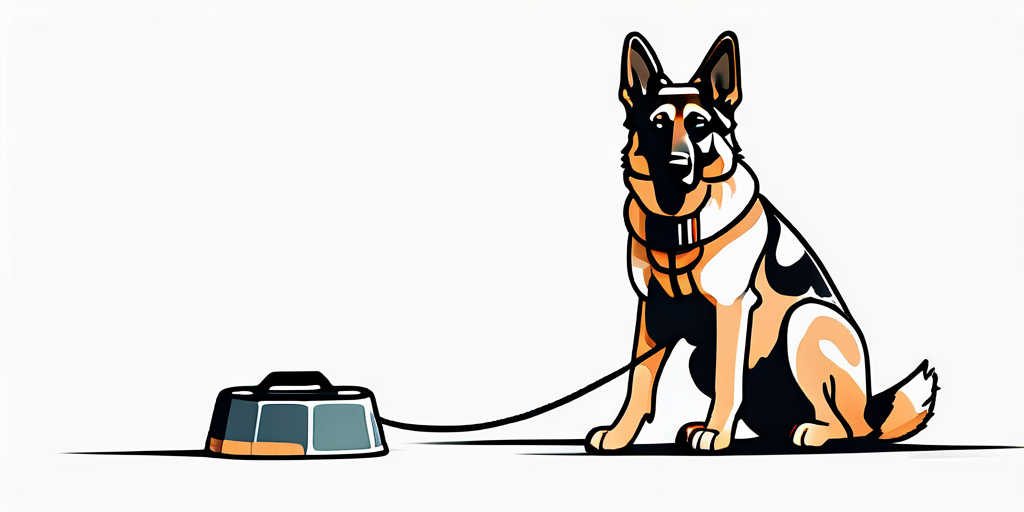German Shepherds are renowned for their protective instincts, intelligence, and versatility. Training a German Shepherd to protect you requires a blend of basic obedience training, socialization, and specialized protection training. This guide will walk you through the process, providing expert advice and practical tips to help you train your German Shepherd effectively.
Understanding Your German Shepherd’s Protective Instinct
Before embarking on training your German Shepherd to protect you, it’s essential to understand their natural protective instinct. This breed is known for its loyalty and protective nature, which can be harnessed through proper training.

However, it’s crucial to remember that not all German Shepherds will exhibit the same level of protective instinct. Factors such as genetics, temperament, and individual personality can influence a dog’s protective behavior. Therefore, it’s important to assess your dog’s natural inclination towards protection before starting the training process.
Recognizing Protective Behavior
Protective behavior in German Shepherds can manifest in various ways. Some dogs may show signs of protectiveness by barking or growling at strangers, while others may exhibit more subtle signs such as body blocking or alertness in unfamiliar situations.
It’s important to distinguish between protective behavior and aggressive behavior. While protective behavior is focused on keeping the owner safe, aggressive behavior is often unprovoked and can be dangerous. If your dog shows signs of aggression, it’s recommended to consult with a professional dog trainer or behaviorist.
Basic Obedience Training
Before your German Shepherd can be trained to protect you, they must first master basic obedience commands. This forms the foundation for all subsequent training and ensures that your dog will respond to your commands in all situations.

Basic obedience training includes commands such as “sit,” “stay,” “come,” “down,” and “heel.” These commands are essential for controlling your dog’s behavior and ensuring their safety.
Steps to Basic Obedience Training
- Start with simple commands such as “sit” and “stay.” Use a firm, clear voice and reward your dog with treats or praise when they follow the command.
- Gradually introduce more complex commands such as “come” and “heel.” Practice these commands in different environments to ensure your dog can respond in any situation.
- Consistency is key in obedience training. Make sure to practice the commands daily and maintain the same commands, gestures, and rewards to avoid confusing your dog.
- If your dog struggles with a particular command, take a step back and break the command down into smaller steps. Patience and persistence are key in successful obedience training.
Socialization Training
Socialization is a crucial part of training a German Shepherd to protect you. It involves exposing your dog to a variety of people, environments, and situations to help them learn to distinguish between normal and threatening behavior.
Without proper socialization, a German Shepherd may become overly protective or aggressive. Therefore, it’s important to start socialization training as early as possible.
How to Socialize Your German Shepherd
- Expose your dog to different environments. Take them to parks, pet stores, and on walks in different neighborhoods. This will help them become comfortable in various situations.
- Introduce your dog to a variety of people. This includes men, women, children, and people wearing uniforms or hats. Make sure these interactions are positive and controlled.
- Allow your dog to interact with other dogs. This can be done through play dates, dog parks, or obedience classes. Make sure the other dogs are friendly and well-behaved to ensure positive experiences.
- Expose your dog to different sounds, smells, and sights. This can include car noises, sirens, or the sound of a vacuum cleaner. Start with low volumes and gradually increase the intensity to avoid overwhelming your dog.
Protection Training
Once your German Shepherd has mastered basic obedience and socialization, you can begin specialized protection training. This training should be done under the guidance of a professional trainer to ensure it’s done safely and effectively.
Protection training involves teaching your dog to protect you on command or in certain situations. It’s important to remember that this training should not encourage aggression, but rather controlled protectiveness.
Steps to Protection Training
- Find a professional trainer. Look for a trainer who specializes in protection training for German Shepherds. They should have a good reputation and positive reviews.
- Start with basic protection commands such as “watch” or “guard.” These commands should instruct your dog to alert you of potential threats without becoming aggressive.
- Gradually introduce more complex commands such as “attack” or “release.” These commands should only be used in emergency situations and should be taught by a professional trainer.
- Practice these commands in different scenarios and environments. Your dog should be able to respond to the commands in any situation.
Training a German Shepherd to protect you is a complex process that requires patience, consistency, and professional guidance. By following these steps and understanding your dog’s natural protective instinct, you can train your German Shepherd to be a reliable and effective protector.
Join the BreedRead Community for More Expert Dog Training Tips
Ready to deepen your understanding and enhance your German Shepherd’s training? Subscribe to the BreedRead free newsletter for a wealth of knowledge at your fingertips. At BreedRead.com, we’re dedicated to providing you with comprehensive guides on dog breeds, care tips, and specialized training strategies. Equip yourself with the insights needed to nurture a strong, healthy bond with your protector. Don’t miss out on our expert advice – your German Shepherd will thank you!

